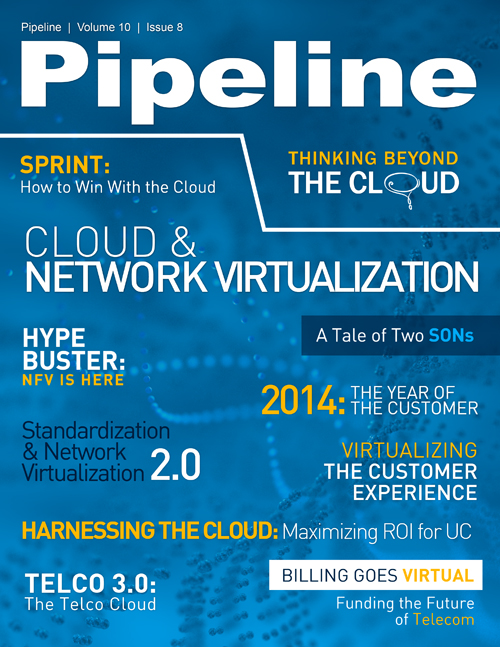Harnessing the Cloud to Maximize Unified Communications Investment
Unified Communications Meets the Cloud
Unified Communications from the cloud is often referred to as UCaaS (Unified Communications as a Service). In this model, Unified Communications is owned and operated by a service provider and delivered via either a multi-tenant or a multi-instance (virtualized) architecture. Users access the applications over an IP network, generally the public Internet. While still a considerable distance from wide-scale adoption, UC boasts some impressive statistics, with UCaaS subscribers projected to grow “by an average [of] 76% per year over the next five years,” according to Synergy Research Group. Small and medium businesses (SMBs) have traditionally been adopters of UCaaS versus large enterprises, primarily because of its simplicity from a cost and technology perspective. SMBs frequently don’t have the budget to spend on dedicated UC IT resources – both personnel and infrastructure. UCaaS allows them to benefit from UC capabilities without the complexity. However, large enterprises are starting to sit up and take notice as well, particularly because UCaaS benefits are so far-reaching, and there is such a wide variety of vendors and service providers to choose from as the market continues to rapidly grow.
While the benefits of cloud UC are vast, they most notably include:
- Significant CAPEX (capital expenditures) savings and predictable OPEX (operational expenditures). Because UCaaS is hosted and managed by the service provider, companies don’t need to invest significant capital to realize the benefits of UC and justify a UCaaS investment. Additionally, since the service is offered on a utility or usage basis, a company can much better project how much the service costs from month to month.
- Better focus on core competencies. Companies often spend a disproportionate amount of time and money managing IT tasks that could be much more efficiently handled externally. Like other as-a-service models (e.g., Infrastructure as a Service), UCaaS enables companies to better focus on strategic business tasks versus purchasing, upgrading and managing infrastructure.
- Advanced tools across locations. With UCaaS, there is consistency across capabilities – whether the user is working out of headquarters, at a branch office or on the road. This really delivers on the concept of unified communications, since everyone is able to fully realize all the capabilities of UC
- Flexibility. Cloud UC can easily become hybrid UC if a company needs to keep certain applications on-premises. Additionally, there is a wide range of service providers and offerings to choose from, ready to meet different budgetary and business requirements. Finally, companies have the option of choosing between a multi-tenant and a multi-instance environment.
UCaaS Architecture – A Closer Look
Service provider UCaaS offerings generally fall in one of two camps: multi-tenant or multi-instance. In a typical multi-instance architecture scenario, a service provider will virtualize a server-based, on-premises PBX (Private Branch Exchange) using a virtualization technology in a data center. Each customer will get his or her own instance (software) but share the virtualization equipment (hardware). With multi-tenant architecture, the customer shares both hardware and software. The service provider enables each customer with access to the same computing capacity, networking resources and even UC application instances as other customers in a service provider’s data center.
Both models have their pros and cons. Multi-tenant architecture is more scalable, since infrastructure is shared and, thus, more cost-effective since these infrastructure efficiency savings can be passed along from service provider to end user. This model is also more fault tolerant, which makes it easier for customers to test new applications. It is also easier for service providers to integrate B/OSS tools for one-instance/multi-tenant versus multi-instance architectures. However, multi-instance architectures have their benefits as well. The most prominent one is security. Many companies don’t have the option of using a multi-tenant model due to sensitive information they may be handling. A multi-instance model enables a company to protect its data while realizing the cost savings of cloud. It also allows for a more customized solution versus UCaaS. Finally, enterprises, in particular, frequently worry about service and network reliability of multi-tenant UCaaS models, especially as they have primarily been geared to the SMB sector in the past. No matter which architecture they choose, enterprises can benefit from the unique advantages that UC from the cloud provides, such as the ability to meet business continuity objectives.



















